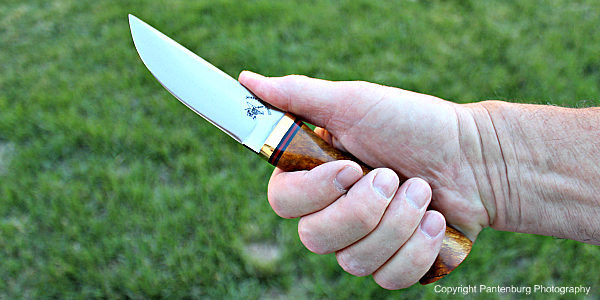Full Tang vs. Partial Tang: Which Construction is Best for a Bushcraft Knife?

When choosing a bushcraft knife, one of the most critical considerations is the type of tang construction. The tang refers to the portion of the blade that extends into the knife’s handle. Understanding the differences between full tang and partial tang designs can help you decide how to choose a bushcraft knife that best suits your needs. This article explores the pros and cons of each construction type to help you make an informed decision.
What is Tang Construction?
Tang construction plays a significant role in the strength, balance, and durability of a knife. The two primary types of tang construction used in bushcraft knives are full tang and partial tang.
Full Tang
A full tang knife has a blade that extends the entire length and width of the handle. This design ensures maximum strength and durability.
Advantages of Full Tang:
- Strength and Durability: The continuous steel provides unparalleled robustness, making it suitable for heavy-duty tasks like chopping and batoning.
- Balance: A full tang offers better weight distribution, improving control and precision.
- Reliability: Even if the handle material becomes damaged, the knife remains functional.
Disadvantages of Full Tang:
- Weight: Full tang knives are often heavier, which might not appeal to users who prioritize portability.
- Cost: The increased material and construction process can make these knives more expensive.
Partial Tang
A partial tang knife has a blade that extends only partially into the handle. There are different variations of partial tangs, such as half tang, rat-tail tang, and encapsulated tang.
Advantages of Partial Tang:
- Lightweight: Partial tang knives are lighter, making them easier to carry on long trips.
- Cost-Effective: These knives are often less expensive than full tang alternatives.
- Versatility: Ideal for light to moderate tasks that don’t require excessive force.
Disadvantages of Partial Tang:
- Less Durable: The reduced tang length makes the knife weaker and more prone to breaking under stress.
- Handle Security: In some designs, the handle material may loosen or detach over time.
When to Choose Full Tang
A full tang knife is ideal if you frequently engage in demanding tasks, such as:
- Chopping Wood: The strength of a full tang knife can handle the impact without breaking.
- Batoning: Splitting wood with a baton requires a durable blade and tang.
- Survival Scenarios: In emergency situations, the knife’s reliability and strength are critical.
When to Choose Partial Tang
A partial tang knife works well for lighter tasks, including:
- Food Preparation: Cutting and slicing food doesn’t require the same level of strength as heavy-duty tasks.
- Carving: Whittling wood or performing precision cuts is often easier with a lighter knife.
- Day Hikes: If weight is a concern, a partial tang knife can be a convenient option.
Testing Tang Construction
Before purchasing a bushcraft knife, consider these tests:
- Inspect the Handle: Look for signs of a continuous tang by checking the handle’s spine and rivets.
- Assess Durability: Test the knife’s strength through moderate use.
- Verify Manufacturer Specifications: Most reputable brands provide details on tang construction.
Conclusion
The choice between full tang and partial tang ultimately depends on your specific needs and intended use. If durability and strength are your priorities, opt for a full tang knife. For lightweight tasks and cost-efficiency, a partial tang may suffice. Explore more about how to choose a bushcraft knife to ensure you select the perfect tool for your outdoor adventures.






